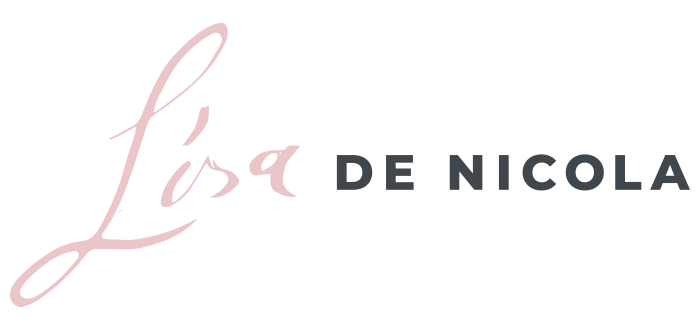Have you ever heard of the expression, “There’s too many cooks in the kitchen?” At work, we call it workplace conflict.
We’ve all experienced some form of workplace conflict, some more than others. Inevitably, as close as we may be with our peers or colleagues, we’re bound to have disagreements even with the best intentions to do and show up as our best.
Sometimes it’s still not enough, and we’ll work with difficult personalities. It becomes even more challenging to navigate and resolve in a remote environment.
Research shows the upside of remote working from increased productivity to longer working hours (although not sure longer working hours are an upside). If you pair that with our current reality of working through a pandemic, homeschooling kids, the instability of the economy and global affairs, it’s enough for conflict to arise at the drop of a hat.
In cases where it’s not always obvious, it doesn’t mean it doesn’t exist. Fear-based cultures have a way of keeping people quiet and, unfortunately, come out years later in some instances where the revolving door of people coming and going finally catches up.
Here are some of the ways conflict can show up at work:
- Personality clashes – different values, work styles and work ethics are misaligned with those we work closely with. Instead of taking our time to understand our differences and get to know the people we’re working with, it sets the stage for conflict to arise.
2. Tasks & Responsibilities – with all the changes organizations have experienced during the pandemic, restructuring, reorgs, you name it, it’s not a surprise to see employees and leaders bud heads on who’s doing what and who’s responsible for who.
3. Management styles – management styles that don’t fit the company culture and are poor people leaders often can be the cause of conflict at work.
Ignoring a workplace conflict, whether in an office or a remote work environment, will cost you more in the long run if it goes unaddressed in the short term. Working relationships that have now shifted to the online space mean the friction that may be there between a colleague or manager is carrying over to our email or Slack even more than before.
In fact, it can be harder to pick up on because of the lack of verbal cues and observations that are eyes tell us and instead are now masked with snarky remarks or passive-aggressive tones over the phone.
While these behaviours may be obvious to some, you still have to do some leg work to identify a conflict if people are afraid to speak up or don’t know how to directly resolve conflicts they may be experiencing.
I worked with a client recently who wanted to work on her confidence to deal with a colleague she often clashed with. I asked her what seemed to be the challenge in their working relationship. She said, “Well, we both have shared responsibility for my team, and he often doesn’t like my ideas. The way he communicates with me, I find disrespectful.”
It wasn’t the confidence that she needed. She needed to know how to effectively communicate to help her resolve the issue she was having with her colleague. She didn’t know how to effectively manage their disagreements when they interacted, and she needed to find the courage to speak up. To be direct in her communication without going for the jugular to express how she felt and get their working relationship back on track.
Something along the lines of, “I wanted to share some feedback with you in hopes we can resolve some of the challenges I’m experiencing from our last few meetings. I’d welcome your perspective and thoughts if there’s anything you’ve observed and would like to share. When you said X last time we met, it made me feel like you didn’t respect my idea.
Since we both have shared responsibility for the team, I’d like to find a way to work more cohesively together. Here are some of my ideas…”
This took some time as a few things came up. She wasn’t sure how to express her feelings in a way where she wouldn’t be pinned as emotional, especially as a female in the workplace and in a way where her feedback would be received.
The goal here was to foster change in the relationship moving forward. She thought it was having the confidence to speak up. Ultimately it was, so she felt heard, respected and valued.
This also wasn’t done over email. She had a video call; if that wasn’t an option, she would have planned a phone call to communicate her feedback.
So how do you manage workplace conflict in a remote work environment?
The key to resolving workplace conflicts, so it doesn’t cost you a lawsuit or your best employees heading for the exit, is communication. Get ahead of it before you have to chase after it.
Don’t wait for a problem to occur for it to be fixed. Be proactive by investing in your working relationships. People often need to be reminded of the rules of engagement when working primarily online. What are the best practices you can share with your employees?
Make time to connect with your employees, peers and colleagues to get to know them. The stronger the relationship, the easier it is to navigate conflict and disagreements.
Communicate, communicate, communicate! If you’re unsure of something, someone said – ask and clarify. Pick up the phone and don’t rely on text or email. When emotions can run high, you may be triggered or uncertain of a message, don’t play a guessing game or assume the worst. Assume positive intent and give people the benefit of the doubt.
Set clear expectations. When working with others, clear lines and expectations need to be established. Not just in a manager/ employee relationship but in our peer-to-peer relationships. And not in a dictatorship type of way, with kindness and a direct approach, so there’s no room for misunderstandings.
Be kind. Consider people’s feelings. How would you like to be treated? Can you offer that same level of kindness and respect to those you work with? If you’re emotionally charged from something, someone said, take some time to tend to what’s coming up for you before you communicate with the other person.
Leaders need to be skilled and have the emotional maturity to support their employee’s work through workplace conflict if they don’t know how to deal with it independently.
There have been countless conversations I’ve had with people in my prior recruiting career where people have left companies due to a toxic work environment. That normally meant the people they were working with contributed to an environment that brewed more conflict than harmony.
Workplace conflict that never got addressed ultimately forced them to leave and find a better place of work. People may stay because of the people they work with and leave because of them.
Be proactive and get ahead of conflict sooner than later before it costs you your people.
I’d love to hear from you!
If you’re working remotely like so many of us are and have experienced workplace conflict, what are some ways you’ve dealt with it?
Let me know in the comments below!
With so much appreciation
Lisa 💖
P.S. Looking for a coaching experience to help you transition out of corporate, move up to the next level or simply look for guidance on what’s next? Then Make Your Connection 3-month group coaching program could be just what you’re looking for. This program is creatively designed for the driven and ambitious woman looking to reconnect to who she is, develop the inner skills and grab her role as the leader of her life and take bold action in her business, career and life. Message me for more details, and learn more here!! The group is capped at 6 women and kicks off on November 15th.





